Cyrus The Great: Founder Of Achaemenid Empire Who Conquered Medians, Lydians And Babylonians
A. Sutherland - AncientPages.com - Herodotus, a Greek historian from the 5th century BC, wrote about Cyrus the Great as a tolerant, perfect monarch. In the Bible's Isaiah 44:23-45:8 – Cyrus was called God's Anointed Shepherd and a "predatory bird" coming from the "sunrise". (Isaiah 45: 1; 46:11).
He founded the Achaemenid Empire after conquering three great empires: the Medes, Lydians, and Babylonians.
Who Was Cyrus The Great?
Cyrus was born in the province of Persis, in southwest Iran, in 590 B. He was the son of Cambyses I and the grandson of Astyages, King of the Medes. He came to the Persian throne in 559 BC. Nine years later, he conquered the Medes and unified the kingdoms of the Medes and the Persians.
He also united most of the ancient Middle East into a single state stretching from India to the Mediterranean Sea, which meant that he possessed the largest empire in the world at that time.
Cyrus is mentioned some twenty-three times in the Old Testament. Isaiah, the 8th-century BC Jewish prophet for whom the Book of Isaiah is named, refers to Cyrus as Jehovah's "shepherd," the Lord's "anointed," who was appointed to facilitate the divine plan. God would lead Cyrus to "subdue nations" and "open doors" (an allusion to the Jews' release from Babylonian captivity).
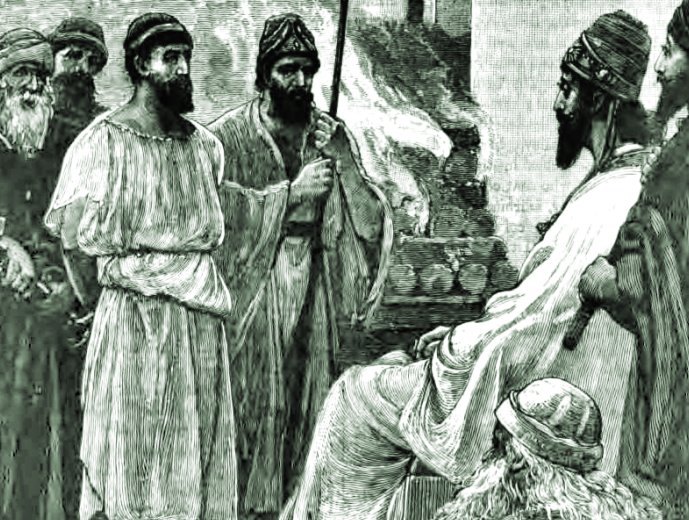 Croesus vanquished, standing in front of Cyrus. Image source
Croesus vanquished, standing in front of Cyrus. Image source
He would help the Hebrews (more than 40,000 of them) return to Jerusalem and eventually be responsible for the rebuilding of Jerusalem and the reconstruction of the temple.
His march of fame began around 560 or 559 BC when, after his father's death, Cambyses I, he took the throne of Anshan - a city (or region) in ancient Persia. At that time, Anshan was under the authority of the last Median king, Astyages, but Cyrus won a rapid victory over his army and gained the loyalty of the Medes.
From then on, the Medes and Persians fought together under Cyrus' command. Thus, the Medo-Persian state was created, covering the area from the Aegean Sea to the Indus River over time.
Standing at the head of the combined forces of the Medes and the Persians, Cyrus first decided to take control of the situation in the western part of Media, where Croesus, the king of Lydia (595 BC – c. 546 BC), enlarged his state at the expense of the Median territory. He approached the eastern borders of the kingdom of Lydia, located in Asia Minor, and defeated Croesus (595 BC – c. 546 BC), capturing his capital, Sardis.
Clash With Powerful Babylon
Cyrus continued to expand his empire. He conquered the Lydians to the west and then focused on the Babylonian Empire. By 540 BC, Cyrus captured Elam (Susiana) and its capital, Susa.
The four-winged guardian figure representing Cyrus the Great or possibly a four-winged Cherub tutelary deity. Bas-relief found at Pasargadae on top of which was once inscribed in three languages the sentence "I am Cyrus the king, an Achaemenian." Source
Babylon was ruled by King Nabonidus (556 until 539 BC), the last king of Babylonia. Cyrus did not take Babylon by force. Instead, he fought a propaganda campaign to exploit the unpopularity of Nabonidus, a tyrant with odd religious ideas. He saw himself as a liberator of people and not a conqueror.
Book of Daniel says: "His widespread troops-their number, like that of the water of a river, which could not be counted, strolled along, their weapons packed away. Without any battle, he made him enter his city, Babylon, sparing Babylon any damage. He delivered into my hands Nabonidus, the king who did not worship him."
Almost two centuries before, God (through the prophet Isaiah), named Cyrus, the ruler who would defeat Babylon and free Jews from captivity. When in 539 BC, Cyrus went to Babylon, the capital was surrounded by the great and high walls and waters of the Euphrates. The city was like an impenetrable fortress. The following excerpt from the cylinder text tells about the ease with which Cyrus' army entered the city of Babylon. There was little or no resistance from its defenders.
It also substantiates Isaiah's prophecy and the events in the Book of Daniel, which reveals that the same night, when the king of Babylon was having a great feast, the city was invaded, and the king was killed. The biblical account supports the text on the Cyrus Cylinder.
When the Persians overthrew the Babylonian empire (539 BC), Cyrus, the conqueror, announced the release of the Jews from their seventy-year captivity. Referring to this task, commissioned in advance, the Holy Bible calls him "God's anointed one" (Isaiah 44: 26-28):
Achaemenid Empire detailed map. Image credit: Daddok9301 - CC BY-SA 4.0
- who carries out the words of his servants and fulfills the predictions of his messengers, who says of Jerusalem, 'It shall be inhabited,' of the towns of Judah, 'They shall be rebuilt,' and of their ruins, 'I will restore them,'
27 who says to the watery deep, 'Be dry, and I will dry up your streams,'
28 who says of Cyrus, 'He is my shepherd and will accomplish all that I please; he will say of Jerusalem, "Let it be rebuilt," and of the temple, "Let its foundations be laid...."
The inscription of the Cyrus Cylinder says that Cyrus proclaimed himself "king of Babylon, king of Sumer and Akkad, king of the four corners of the world." He improved Babylonia's citizens' lives, repatriated displaced peoples, and restored temples and cult sanctuaries.
Cyrus the Great probably believed in the Persian prophet Zoroaster's teachings and worshiped the God Ahura Mazda. After 30 years of rule, Cyrus, a brave, intelligent conqueror and tolerant monarch, died in 530 BC during one of his war expeditions; others say he died peaceably at his capital.
After him, his son, Cambyses II, sat on the throne of Persia.
Written by – A. Sutherland - AncientPages.com Senior Staff Writer
Updated on Sep 25, 2023
Copyright © AncientPages.com All rights reserved. This material may not be published, broadcast, rewritten or redistributed in whole or part without the express written permission of AncientPages.com
Expand for referencesReferences:
The Circle of Ancient Iranian Studies
Ancient Persia: A Concise History of the Achaemenid Empire, 550–330 BC
More From Ancient Pages
-
 Only One In Four Western Roman Emperors Died Of Natural Causes
Archaeology | Oct 15, 2021
Only One In Four Western Roman Emperors Died Of Natural Causes
Archaeology | Oct 15, 2021 -
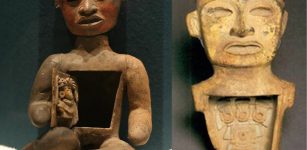 Mysterious Teotihuacan ‘Host’ Figurines From Metepec, Mexico
Artifacts | Jan 6, 2016
Mysterious Teotihuacan ‘Host’ Figurines From Metepec, Mexico
Artifacts | Jan 6, 2016 -
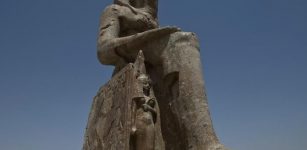 Remarkable Massive Statues Of Pharaoh Amenhotep III Discovered In Luxor
Archaeology | Mar 25, 2014
Remarkable Massive Statues Of Pharaoh Amenhotep III Discovered In Luxor
Archaeology | Mar 25, 2014 -
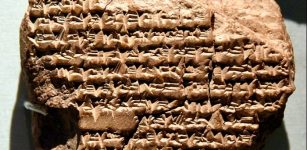 On This Day In History: Battle Of Gaugamela – Alexander The Great Defeats Darius III Of Persia – On Oct 1, 331 BC
News | Oct 1, 2016
On This Day In History: Battle Of Gaugamela – Alexander The Great Defeats Darius III Of Persia – On Oct 1, 331 BC
News | Oct 1, 2016 -
 Mystery Of Saint Brendan’s Island – Glimpses From An Alternate Reality, Fata Morgana Or A Submerged Land?
Featured Stories | May 6, 2023
Mystery Of Saint Brendan’s Island – Glimpses From An Alternate Reality, Fata Morgana Or A Submerged Land?
Featured Stories | May 6, 2023 -
 Yam: Tyrannical Hydra-Like Sea Monster God Cast Out Of Heaven
Featured Stories | Aug 3, 2016
Yam: Tyrannical Hydra-Like Sea Monster God Cast Out Of Heaven
Featured Stories | Aug 3, 2016 -
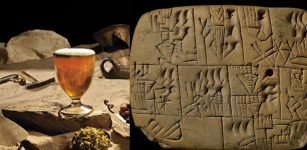 World’s Oldest Paycheck Reveals Ancient Sumerian Workers Were Paid In Beer
Ancient History Facts | Nov 22, 2018
World’s Oldest Paycheck Reveals Ancient Sumerian Workers Were Paid In Beer
Ancient History Facts | Nov 22, 2018 -
 Hidden Inca Water System Beneath The Machu Picchu Jungle Discovered By LIDAR
Archaeology | Mar 11, 2022
Hidden Inca Water System Beneath The Machu Picchu Jungle Discovered By LIDAR
Archaeology | Mar 11, 2022 -
 Long-Lost Roman Bridge Re-Discovered In Chepstow River Wye Mud, UK
Archaeology | Aug 12, 2023
Long-Lost Roman Bridge Re-Discovered In Chepstow River Wye Mud, UK
Archaeology | Aug 12, 2023 -
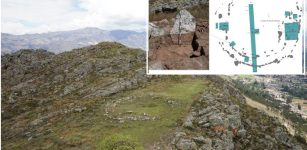 Callacpuma’s Megalithic Stone Circular Plaza Was Constructed Using A Technique Previously Unseen In The Andes
Archaeology | Feb 15, 2024
Callacpuma’s Megalithic Stone Circular Plaza Was Constructed Using A Technique Previously Unseen In The Andes
Archaeology | Feb 15, 2024 -
 Dreamcatcher: Powerful Protective Amulet Of North American Indian People
Ancient Traditions And Customs | Mar 20, 2020
Dreamcatcher: Powerful Protective Amulet Of North American Indian People
Ancient Traditions And Customs | Mar 20, 2020 -
 Mysterious Mount Roraima Surrounded By Myths And Clouds Of Dense Fog
Featured Stories | Nov 13, 2018
Mysterious Mount Roraima Surrounded By Myths And Clouds Of Dense Fog
Featured Stories | Nov 13, 2018 -
 207-Year-Old Whaling Shipwreck Discovered In Gulf Of Mexico
Archaeology | Mar 23, 2022
207-Year-Old Whaling Shipwreck Discovered In Gulf Of Mexico
Archaeology | Mar 23, 2022 -
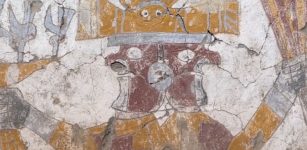 Ancient Murals Of Mysterious Two-Faced Beings And Supernatural Creatures At Pañamarca, Peru
Archaeology | Mar 21, 2023
Ancient Murals Of Mysterious Two-Faced Beings And Supernatural Creatures At Pañamarca, Peru
Archaeology | Mar 21, 2023 -
 Historic Event – Exeter Museum Returns Ceremonial Dress Of Famous Chief Crowfoot To Canada’s Siksika People
Artifacts | May 20, 2022
Historic Event – Exeter Museum Returns Ceremonial Dress Of Famous Chief Crowfoot To Canada’s Siksika People
Artifacts | May 20, 2022 -
 A 1,000-Year-Old Intact Mummy Unearthed In Ancient Pachacamac Site, Peru
Archaeology | May 31, 2018
A 1,000-Year-Old Intact Mummy Unearthed In Ancient Pachacamac Site, Peru
Archaeology | May 31, 2018 -
 Chankillo: A 2300-Year-Old Solar Observatory in Peru
Civilizations | Sep 2, 2015
Chankillo: A 2300-Year-Old Solar Observatory in Peru
Civilizations | Sep 2, 2015 -
 Unique Maya Center Of Copán With History Recorded In 2500 Hieroglyphics
Civilizations | Nov 7, 2018
Unique Maya Center Of Copán With History Recorded In 2500 Hieroglyphics
Civilizations | Nov 7, 2018 -
 Kikimora – Nightly Evil Female Spirit And Goddess Of Chickens In Slavic Beliefs
Featured Stories | Oct 22, 2018
Kikimora – Nightly Evil Female Spirit And Goddess Of Chickens In Slavic Beliefs
Featured Stories | Oct 22, 2018 -
 Tiny Points Made By Homo Sapiens 54,000 Years Ago Found In Mandrin Cave
Archaeology | Feb 23, 2023
Tiny Points Made By Homo Sapiens 54,000 Years Ago Found In Mandrin Cave
Archaeology | Feb 23, 2023



